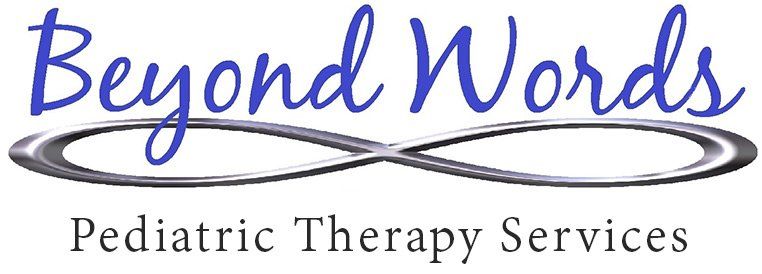Occupational Therapy
Activities of Daily Living (ADL)
Synopsis of ADLs:
This involves basic daily activities one does to be independent.
Areas Addressed with Activities of Daily Living:
- Bathing
- Dressing
- Eating
- Grooming
- Transferring to and from lying or seated position
- Toileting
- Ambulation
- Independent ADLs: shopping, cooking, housework
Fine Motor Skills
Synopsis of Fine Motor:
This area focuses on the acquisition of skills that are important to ensure proper development. These skills are important to promote functional use of the hand.
Areas Addressed with Fine Motor Skills:
- Pinching
- Shoe tying
- Manipulating small objects (i.e. buttons)
- Zipping / unzipping
- Using scissors
- Opening / closing objects
- Handwriting
- Grasping items
- Isolating finger movements
Sensory Integration and Processing Skills
Synopsis of Sensory Integration and Processing:
This area refers to how people process and use the information provided by all the sensations coming from within the body and from the external environment. Therapy is designed to stimulate and challenge all of the senses. The therapist focuses on challenging the child through child-centered activities, adapting the child’s behavior in response to activities presented, increasing participation in challenging situations and allowing the child to drive the course of the treatment based on their needs and difficulties.
Social Interactions
Synopsis of Social Skills:
These skills are important for each child to develop as it is one’s ability to interact with others. These skills are the foundation needed for each child to be able to perceive, attend to and learn from their environment.
Areas Addressed with Social Interactions/Skills:
- Emotional Outbursts: Having good coping mechanisms in place will allow any person to overcome new or difficult situations, in turn reducing or eliminating emotional responses
- Managing Behavior: Based on the child’s needs, skills will be taught to help the child manage their behavior in appropriate ways during difficult situations
- Developing Relationships: Children need to develop proper social skills in order to establish friendships and other social relationships. Giving them the tools of interaction and self-awareness helps them develop these important relationships
Strength, Stability, and Coordination
Synopsis of Strength, Stability, and Coordination:
It is important to build stability, strength, and coordination in the core muscles, upper extremities, along with the head and neck.
Areas Addressed with Strength, Stability, and Coordination:
- Improving Strength: Improving skills in this area will help your child at school with maintaining a good sitting position, improving handwriting skills. Sometimes children may struggle with how to "activate" their muscles to perform gross motor activities
- Improving Stability: Stabilizing the spine is important, enabling it to stay intact during the forces which are exerted upon it during everyday activities. Building core stability in the head, neck, back, abdomen, and pelvis helps to stabilize and protect the spine, along with providing a solid base for movement to take place
- Improving Coordination: Referring to how children can get their arms and legs to work together, coordination is important across many daily activities. Many tasks require coordinated movement using both sides of the body. Poor coordination can make children struggle with everyday childhood tasks including, but not limited to, jumping, cutting with scissors or a knife and fork, tying shoelaces, etc
Visual-Motor Integration and Perception Skills
Synopsis of Strength, Stability, and Coordination:
It is important to build stability, strength, and coordination in the core muscles, upper extremities, along with head and neck.
Areas Addressed with Strength, Stability, and Coordination:
- Tracing, copying or drawing shapes, numbers, and letters
- Practicing handwriting patterns
- Problem-solving
- Hand-eye coordination
- Perceptual organization
- Visual-spatial perception
- Motor planning and coordination
- Fine motor control
- Visual tracking
- Visual memory and attention
- Manipulating objects
- Lacing
Schedule an Appointment
We Provide Personalized and One-On-One Care.
(409) 554-0689
(409) 554-0689
"Beaumont is lucky to have such a great facility. The speech therapists are caring professionals with years of experience."
- Mary M via Google
VISIT US
,
This is a placeholder for the Yext Knolwedge Tags. This message will not appear on the live site, but only within the editor. The Yext Knowledge Tags are successfully installed and will be added to the website.
This is a placeholder for the Yext Knolwedge Tags. This message will not appear on the live site, but only within the editor. The Yext Knowledge Tags are successfully installed and will be added to the website.
HOURS
This is a placeholder for the Yext Knolwedge Tags. This message will not appear on the live site, but only within the editor. The Yext Knowledge Tags are successfully installed and will be added to the website.
HOURS
This is a placeholder for the Yext Knolwedge Tags. This message will not appear on the live site, but only within the editor. The Yext Knowledge Tags are successfully installed and will be added to the website.
HOURS
This is a placeholder for the Yext Knolwedge Tags. This message will not appear on the live site, but only within the editor. The Yext Knowledge Tags are successfully installed and will be added to the website.
Monday
Tuesday
Wednesday
Thursday
Friday
Saturday
Sunday
This is a placeholder for the Yext Knolwedge Tags. This message will not appear on the live site, but only within the editor. The Yext Knowledge Tags are successfully installed and will be added to the website.
CONTACT US
This is a placeholder for the Yext Knolwedge Tags. This message will not appear on the live site, but only within the editor. The Yext Knowledge Tags are successfully installed and will be added to the website.
Hi. Do you need any help?
Privacy Policy
| Do Not Share My Information
| Conditions of Use
| Notice and Take Down Policy
| Website Accessibility Policy
© 2024
The content on this website is owned by us and our licensors. Do not copy any content (including images) without our consent.

Share On: